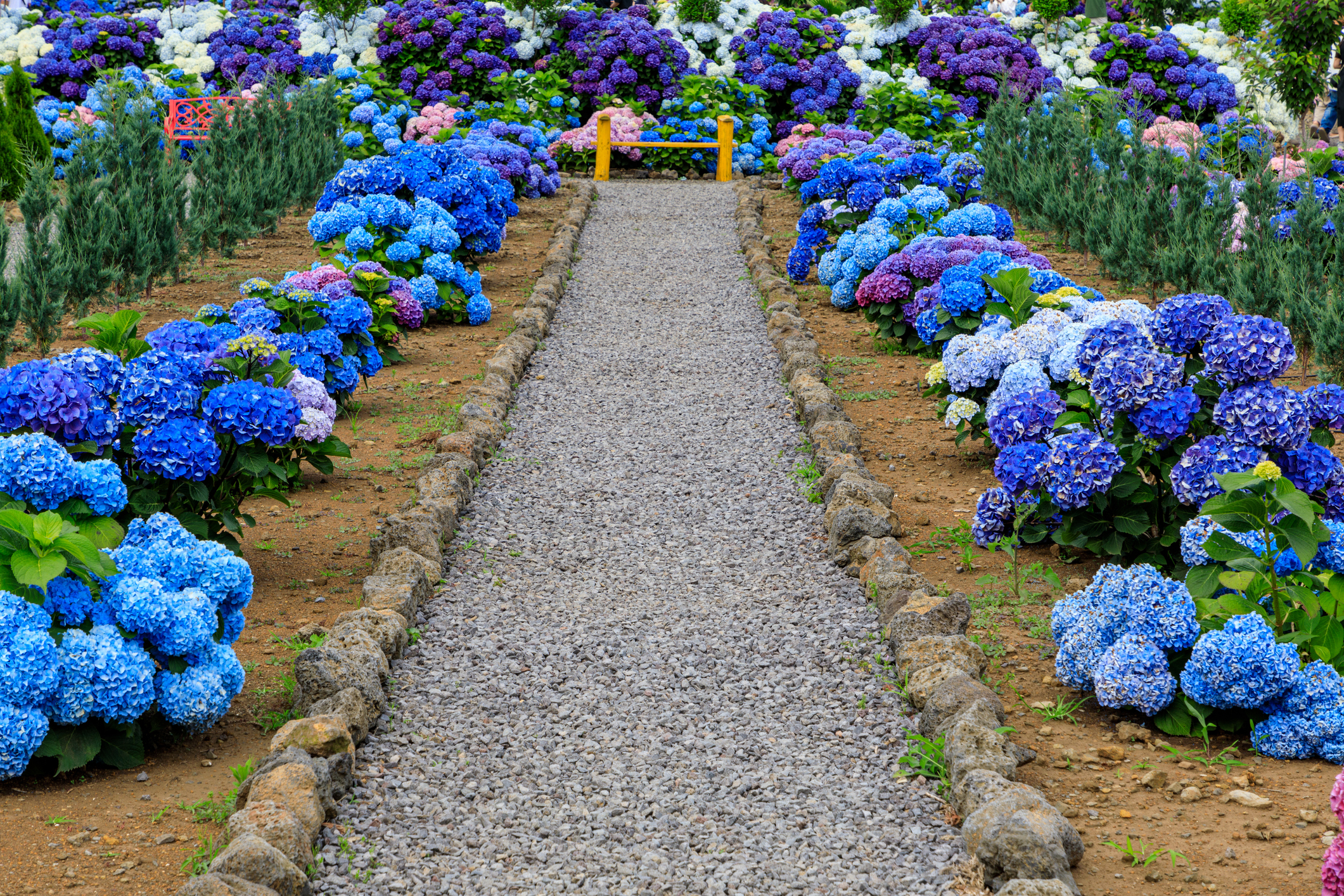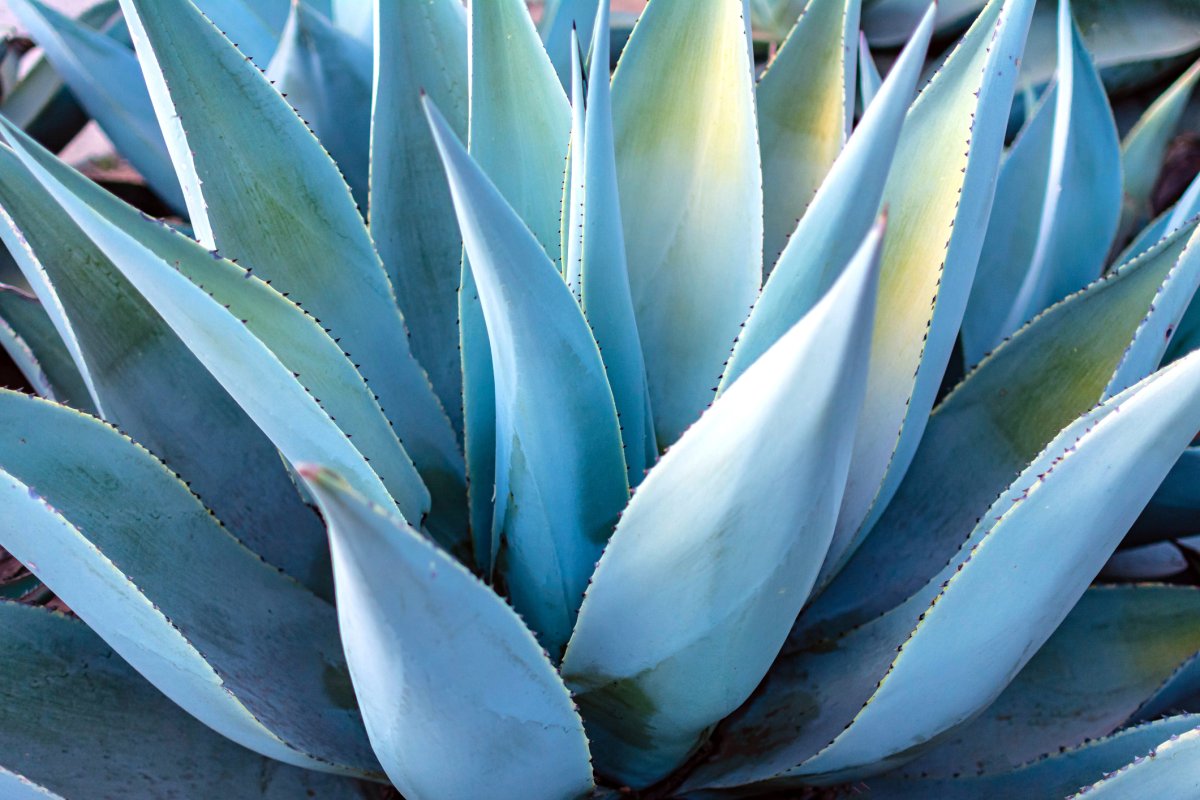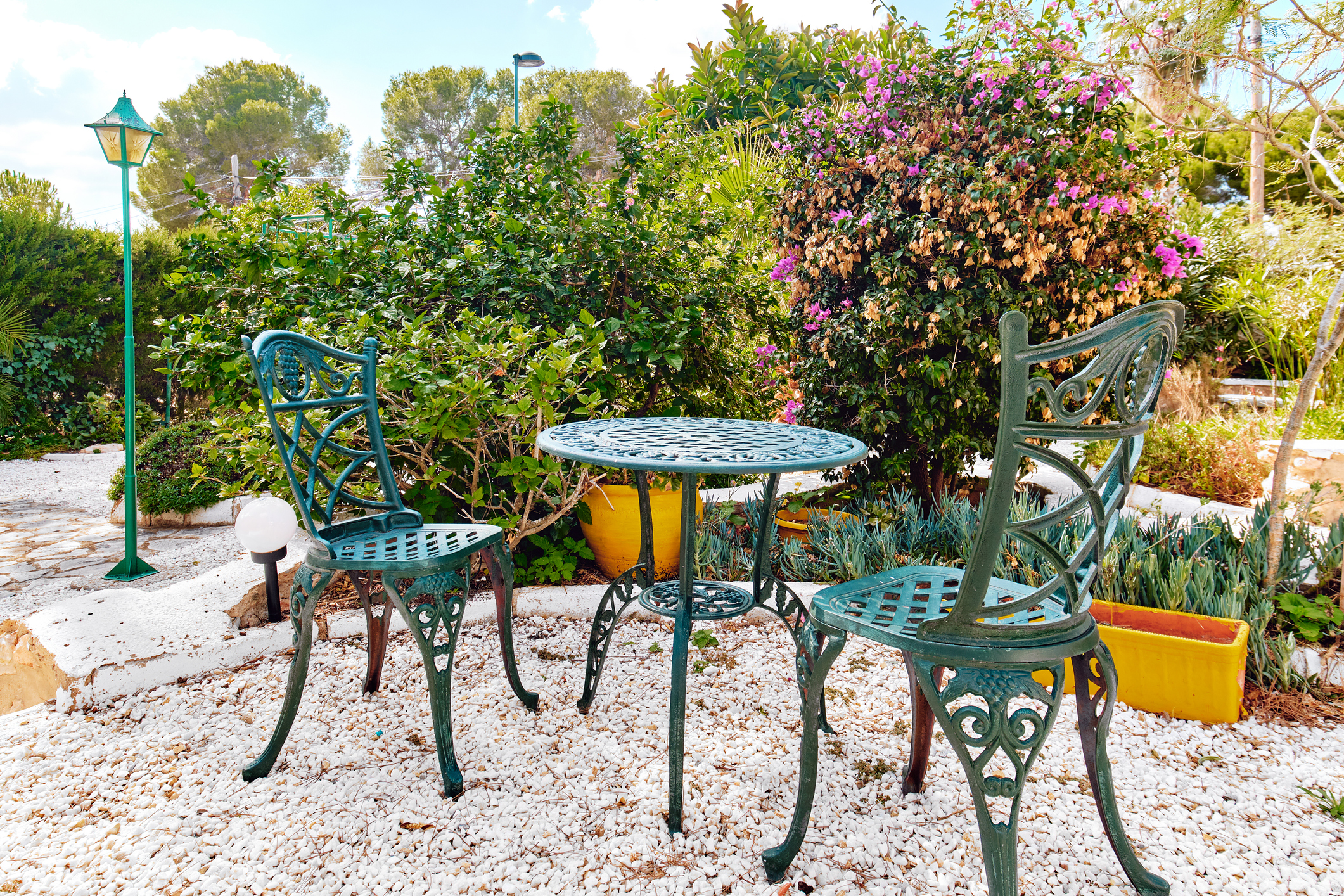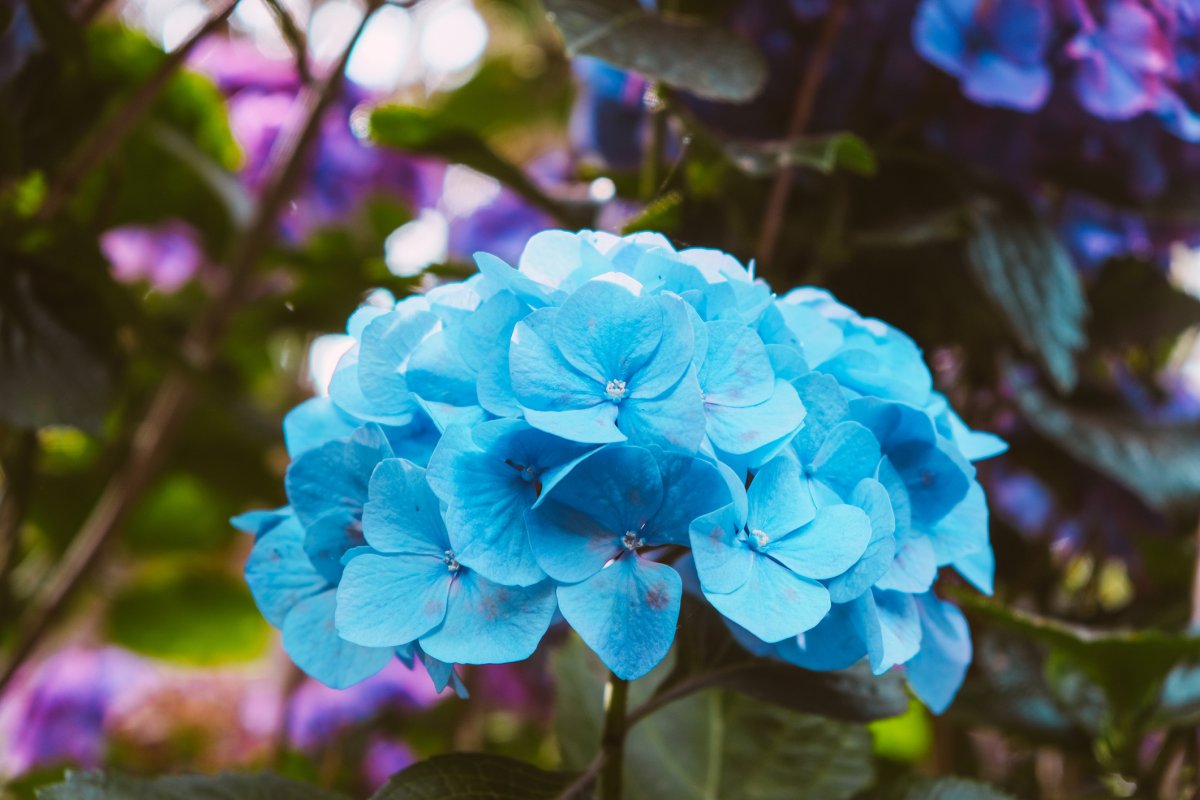We may earn revenue from the products available on this page and participate in affiliate programs. Learn More ›
Choosing a color palette or theme for your garden can quickly get overwhelming. That’s why every year design experts announce new trends, including a color of the year. Getting everyone jazzed up about one particular color helps reflect the current cultural mood and influences design decisions that set the tone for the year. It also encourages people to think about color differently and notice the emotions each hue can evoke.
For more than 20 years, the Garden Media Group has been picking a “Color of the Year” to include in their annual trends report focused specifically on the lawn and garden industry. For 2025, they chose the color teal.
Discover why teal rose to the top this year, what teal embodies as a color, and how to incorporate this rich hue into your garden design, whether you are looking for a monochromatic garden or to sprinkle some teal throughout your yard.
Why Teal Is the 2025 Color of the Year
Garden Media Group chose teal for several reasons. First, its bold, synthetic quality “bridges the realms of fantasy and reality, evoking the serene blues of Caribbean waters, the expansive freedom of vast skies, and the immersive depth of virtual spaces,” says the report.
It also aligns well with current health and wellness trends, offering a calming effect that is as sophisticated as it is soothing. “Whether applied sparingly or used as a bold statement piece, this color complements a modern palette that includes shades of blue, green, brown, orange, and gold, making it a versatile choice for any setting,” says Garden Media Group.
Finally, the color helps address a sense of tech nostalgia. “There’s more to this color than its aesthetic appeal. It also evokes a powerful sense of nostalgia for the vibrant and carefree spirit of the 1990s and early 2000s, a time of bold fashion and optimistic energy,” says the company’s 2025 report. Early tech designs like the first iPhone or Windows 7 are known for teal and green hues and glossy textures, which dominated the tech scene from 2000 to 2013. In essence, teal rejects the minimalism of recent years, bringing joy and vibrancy back into design by looking back to that period in time.

How Teal Makes Us Feel
Teal is a medium to deep blue-green color made by combining blue and green pigments into a white base. The soothing blue-green shade is common in the natural world, whether it be the ocean, tropical lagoons, peacock feathers, or flowers. Surveys show that blue and green are Americans’ favorite colors, and teal is that happy medium, according to the Interior Designers Institute.
Color psychologists have been studying the meaning behind colors and how they make us feel for generations. This blend of blue and green gives off a sense of peace and tranquility. It helps us feel more balanced, relaxed, and stable. The color is also said to have healing properties and to help us feel happier and more optimistic. Because it helps reduce stress, encourages clear thinking and concentration, and represents trustworthiness and reliability, teal is a popular choice in fields like business and interior design.
Design Tips to Make Teal Pop
Gardeners can incorporate teal into their landscape designs in several exciting ways. If you are craving a monochromatic look, you can create a single-color garden with teal flowers and plants. By grouping plants of the same color together, you end up with an attractive garden look that is orderly and restful to the eye.
If you are looking to add some splashes of color throughout your garden, teal is incredibly versatile as either a vibrant accent or soothing base color. Katie Dubow, president of Garden Media Group, suggests pairing teal with bright yellows, oranges, limes, or golds to create a dynamic contrast. “Or pair with greens and earthy browns for a more tranquil and cohesive look,” she says.
The sophisticated look and depth that teal provides also contrasts nicely with coral, blush pink, and maroon. For a more subdued, elegant aesthetic, match teal with white, pale yellow, gray, or cream colors.

Choosing Teal Flowers and Foliage
Nature produces an array of gorgeous teal flowers and plants to introduce into your garden. Dubow suggests incorporating plants with different textures alongside teal-hued plants, such as soft, feathery grasses or bold-leaved varieties, to create a visually rich environment. “Plan for a succession of blooms and foliage changes throughout the seasons, ensuring that teal hues are present in spring (bluebells), summer (hydrangeas), and fall (blue fescue),” she also recommends.
Here are some plants recommended by the Garden Media Group that have teal flowers or foliage to consider adding to your garden:
- Blue agave (Agave tequilana): This striking drought-tolerant succulent features thick, fleshy leaves with a beautiful gray-teal hue.
- African lily (Agapanthus): Producing clusters of teal flowers, agapanthus thrives in hot climates.
- Zamin allium (Allium caesium ‘Zamin’): This late spring-blooming bulb features tall, slender stems topped with spherical clusters of blue flowers to add vertical interest.
- Beyond Blue fescue (Festuca glauca ‘Beyond Blue’): This ornamental grass offers fine-textured blue-green foliage that creates a soft, flowing effect in garden beds; it’s drought-resistant and thrives in well-draining soils.
- Blue Chalksticks (Curio repens): This succulent produces pencil-like, blue-green fleshy leaves that form a dense mat; it works well as a groundcover in hot, dry climates.
- Blue spruce (Picea pungens): A classic choice for larger landscapes, this conifer features stunning teal-green needles that provide year-round interest.
- Blue Star Sea Holly (Eryngium alpinum ‘Blue Star’): This drought-tolerant plant has unique electric-blue flowers with feathery petals that surround erect, thimble-like center cones.
- Big Blue Sea Holly (Eryngium x zabelii ‘Big Blue’): Known for its striking spiky flowers, this large sea holly adds unique height, texture, and color while being a haven for pollinators.
- Siberian bugloss (Brunnera macrophylla ‘Jack Frost’): This perennial boasts delicate blue flowers and stunning silvery-blue foliage with heart-shaped leaves.
- Blue flax lily (Dianella ‘Clarity Blue’): This modern-looking plant features striking blades of teal foliage and flowers that thrive in sunny or part-shade areas.
- Blue Haze Spurge (Euphorbia ‘Blue Haze’): Has attractive teal-gray foliage and offers four seasons of interest, including contrasting chartreuse flowers in late spring.
- Blue Spruce Stonecrop (Sedum ‘Blue Spruce’): A small succulent with teal-green foliage, ideal for dry spots or containers.
- Hostas: Also called plantain lily, these shade-loving perennials with large variegated leaves produce blue flowers, depending on the variety. Blue Angel Hosta has large bluish leaves that keep their color best in full shade.
- Skyscraper Senecio (Curio ficoides ‘Mount Everest’): This unique succulent showcases upright growth with vibrant blue leaves that resemble a modern building.

Including Teal Garden Décor and Hardscape Elements
Beyond vegetation, you can add teal to your garden color palette using décor and hardscape elements. “Choose ceramic or painted pots in teal to create visual interest,” says Dubow. “Consider adding blue stones or gravel to pathways or borders to subtly incorporate the color into the landscape design.” Gorgeous teal glass stones can create a very modern look in pots or flower beds.
Dubow also suggests incorporating teal outdoor furniture, such as chairs or benches, to enhance the seating areas. You can easily add pops of teal with pillows, outdoor rugs, table décor, and lights.
If you’re willing to make a long-term commitment, consider installing teal-colored tiles, awnings, or shades in your yard. And, of course, there are endless options using yard art and ornaments, such as statues, sculptures, decorative planters, garden stakes, gazing balls, and bird baths in teal.


